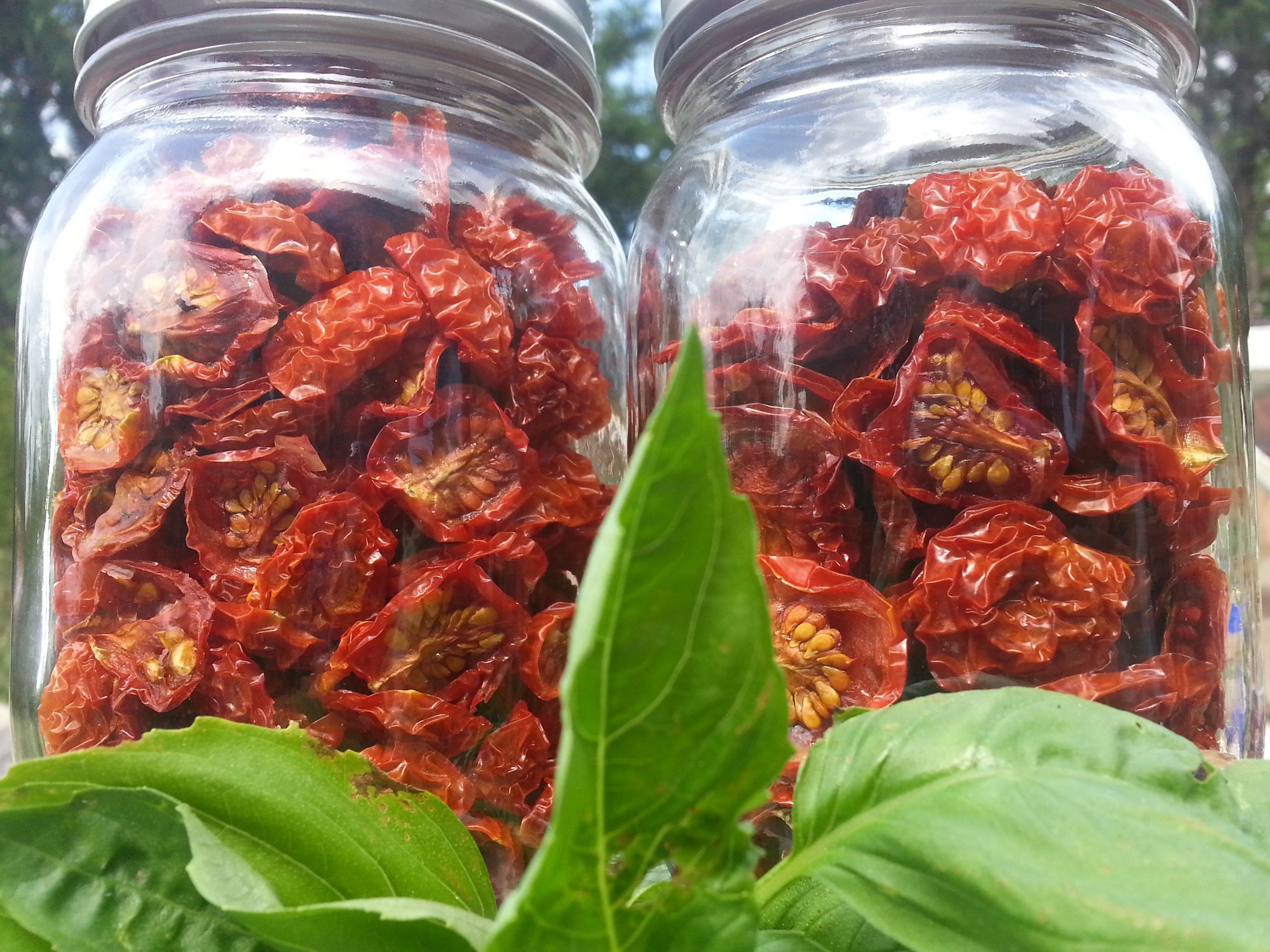
The cherry tomato varieties have been growing beyond their trellis. I've been gathering one of these green bowls full of cherry tomatoes each week. You can see a Roma tomato on the top - from the other garden. Sauce making can be tedious with cherry tomatoes, these tomatoes will be preserved for later use by drying them.
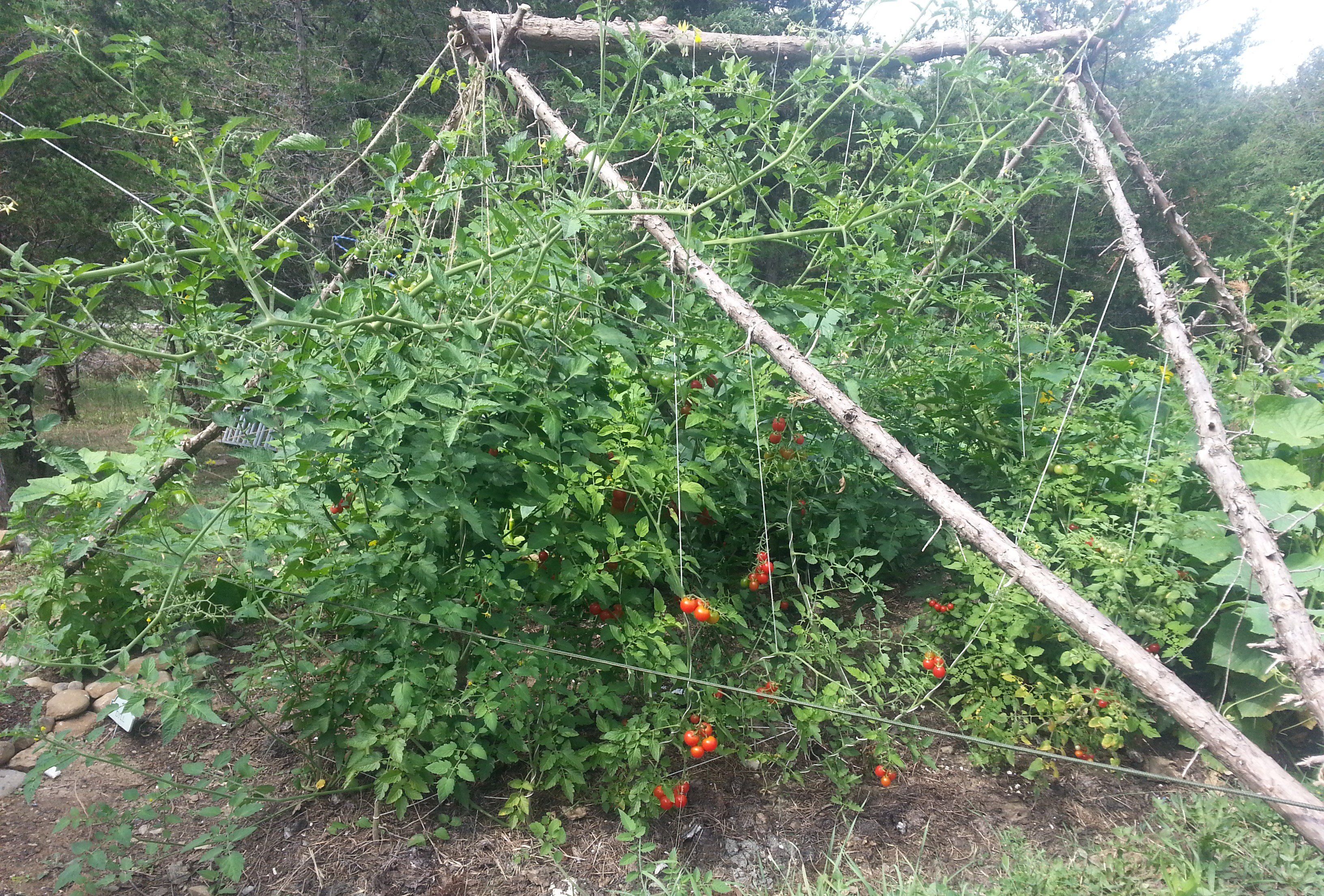
|
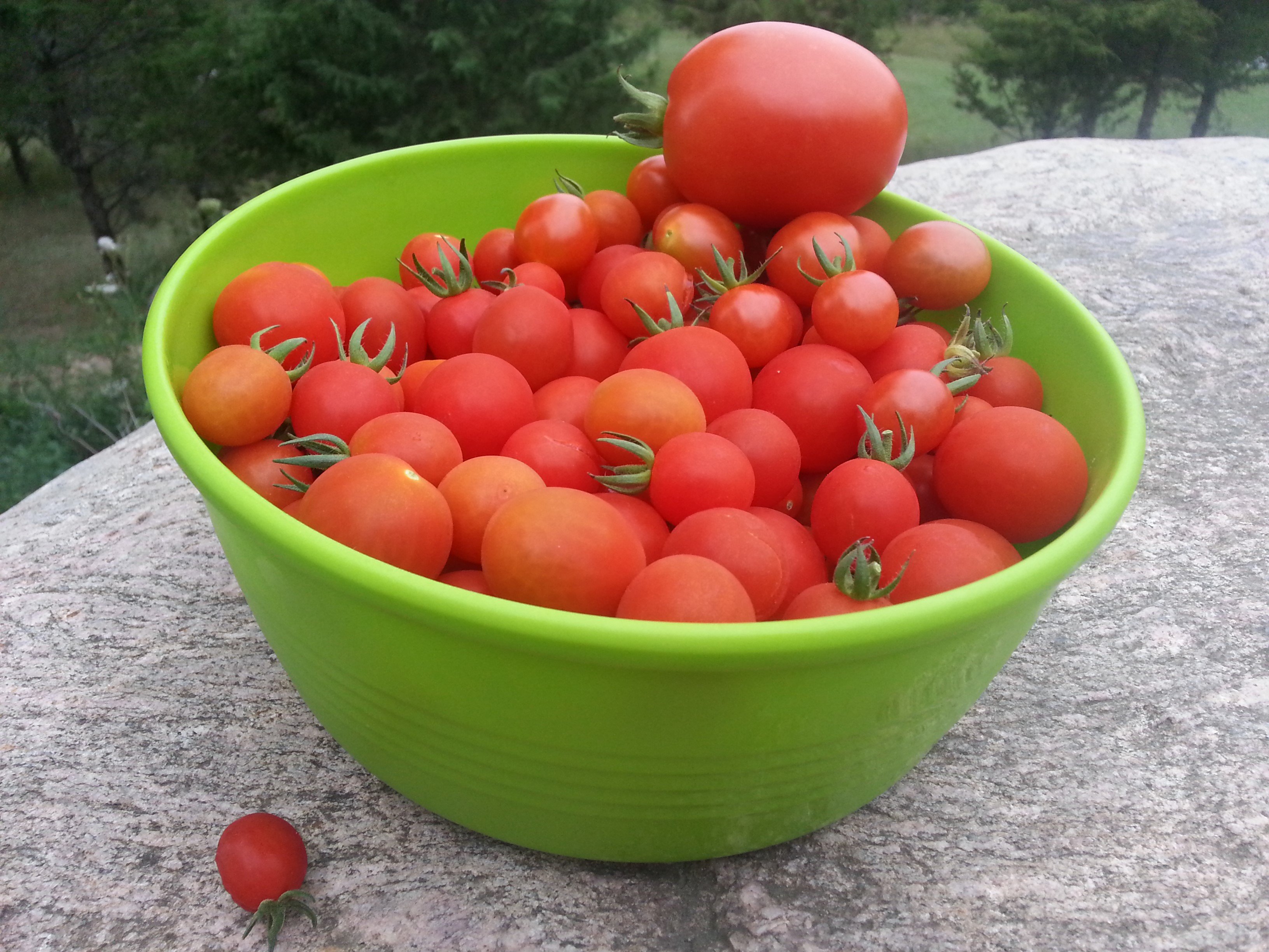
|
Five Cherry Tomato Varieties this Year
In the picture below, from largest to smallest, you can see the Sakura, Sugar Rush, Jasper Hybrid, Sweetie, and Candyland varieties of cherry tomato that I grew this year.
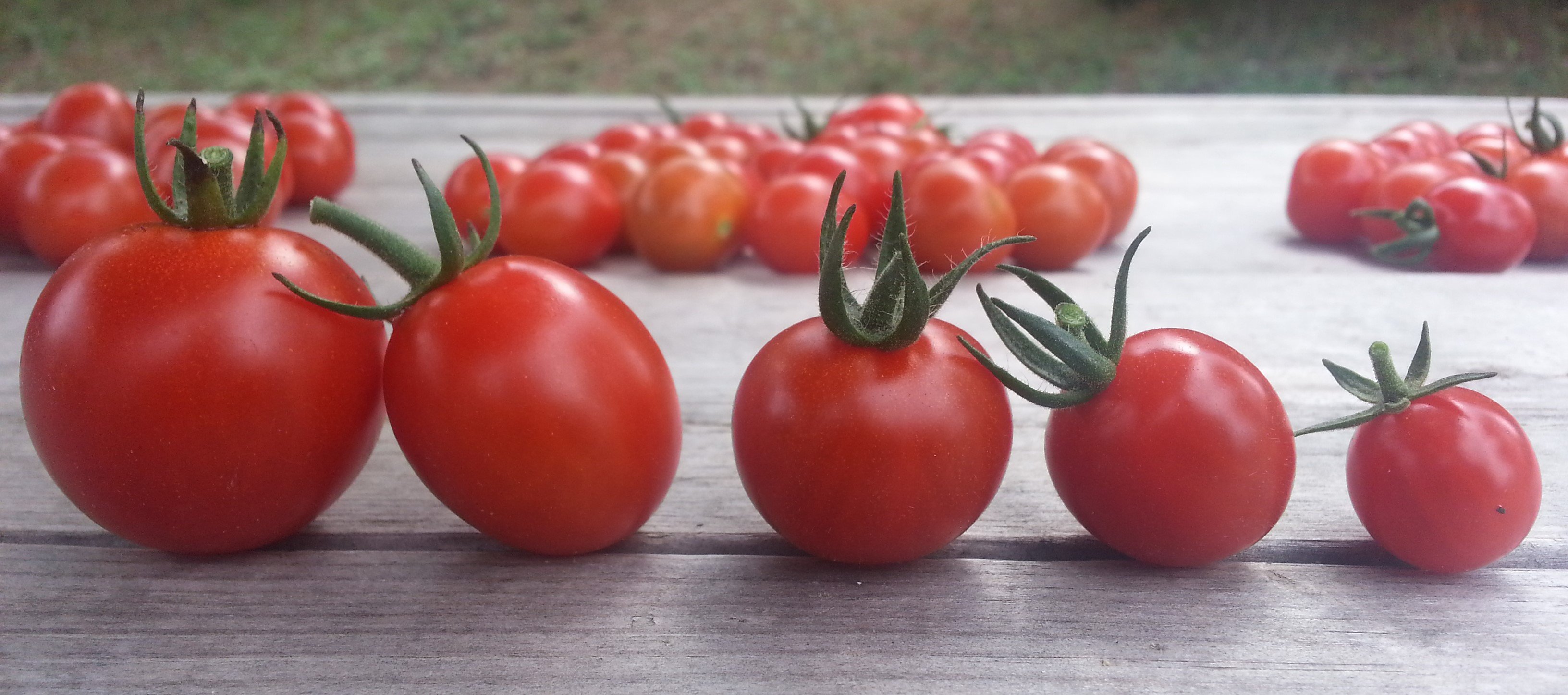
Sakura Cherry Tomato
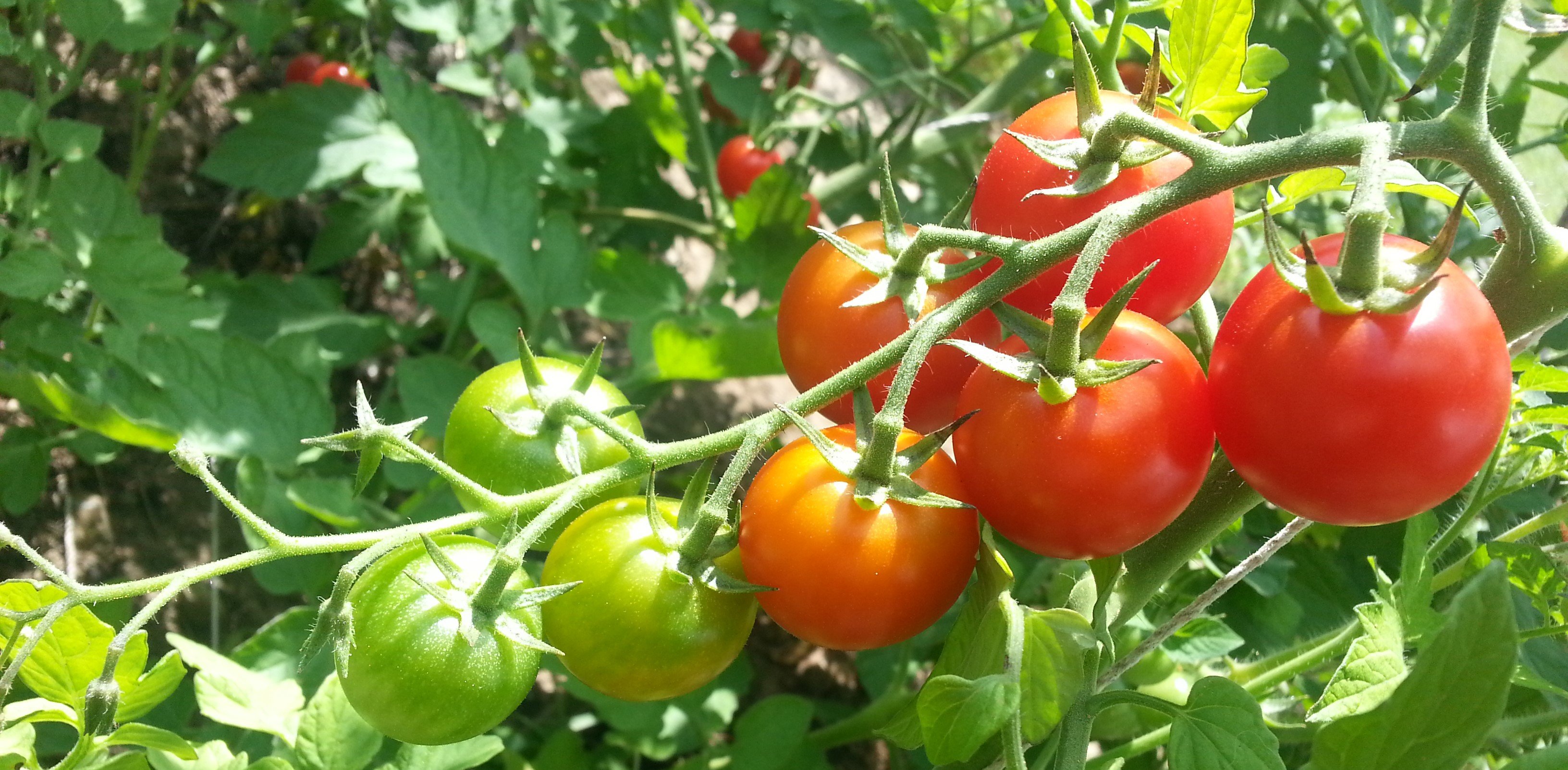
|
The Sakura cherry tomato variety was the quickest to go to fruit and had the largest overall yield. An excellent producer of large spherical shaped tomatoes.
Jasper Hybrid & Sweetie Varieties
 Jasper Hybrid
Jasper Hybrid
|
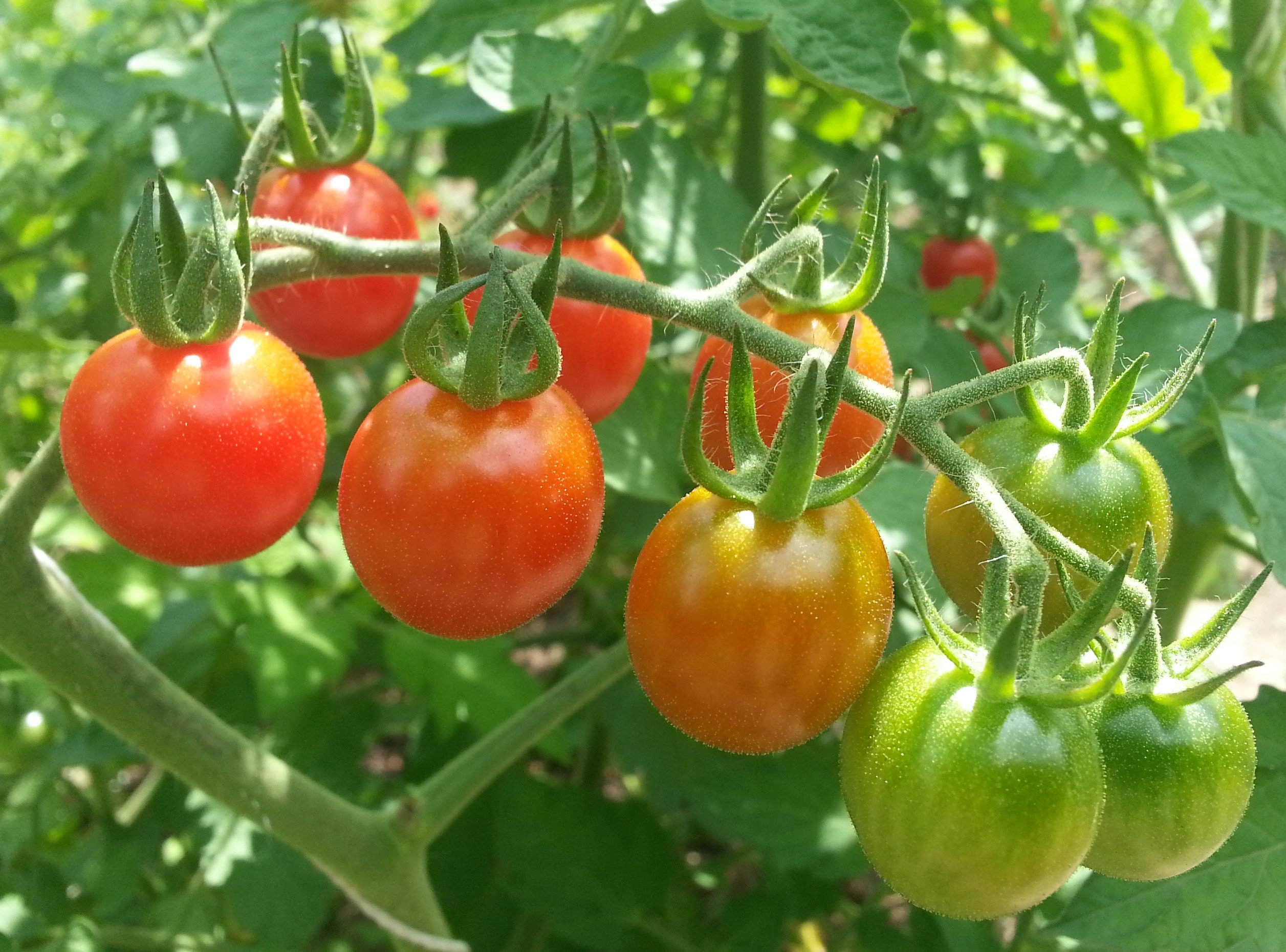 Sweetie
Sweetie
|
The Jasper Hybrid and Sweetie cherry tomato varieties are similar in size with the Jasper Hybrid being a little larger and has a spherical shape. The Sweetie tomato a little smaller and slightly egg shaped. Although the Sweetie tomatoes are smaller than the Jasper Hybrid tomatoes, the Sweetie variety produced more fruit. The Sweetie cherry tomato is a heirloom variety.
Sugar Rush & Candyland Varieties
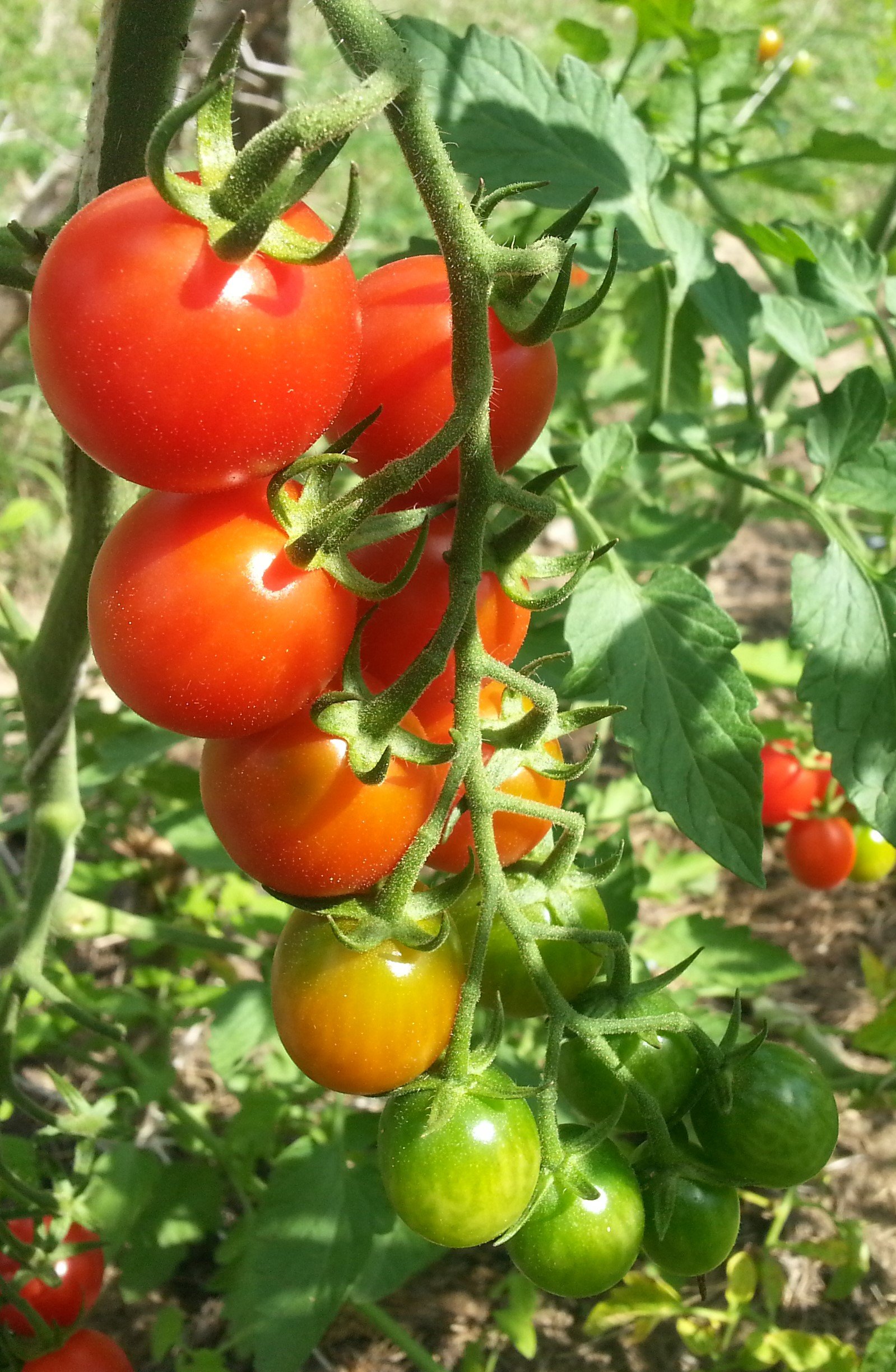 Sugar Rush
Sugar Rush
|
 Candyland
Candyland
|
The Sugar Rush cherry tomato variety has a slight egg shape and is the second in size after the Sakura variety - It was also the second variety to bear fruit - after the Sakura. The Candyland cherry tomato variety was the most unique of the five. The plant itself was smaller than the rest and had thicker, almost fuzzy leaves. It was the last cherry tomato variety to ripen this year, but once it's gets started, it produces large and colorful cascades of small grape size tomatoes.
Dehydrating Tomatoes
Dehydrating fruits, vegetables, and meats is one of the oldest methods of food preserving. Water can be removed with an electrical dehydrator, a solar powered dehydrator, in the oven, or laid out on rocks in the hot sun (on a +85*F day). When the water is mostly removed, life can not grow - including bacteria, mold, yeast, and other growths that would spoil the food. When food is properly dehydrated, it can be stored on a dark, cool, and dry shelf - without refrigeration.
I am working on building a passive solar powered dehydrator for the large quantities of garden veggies that I would like to dry each season. I do have an electric powered food dehydrator that I am running off the solar panels to dehydrate this batch of cherry tomatoes. The dehydrator has a heating element and fan in the bottom unit that blows hot air (135-140*F) into the racks filled with cherry tomatoes sliced in half.
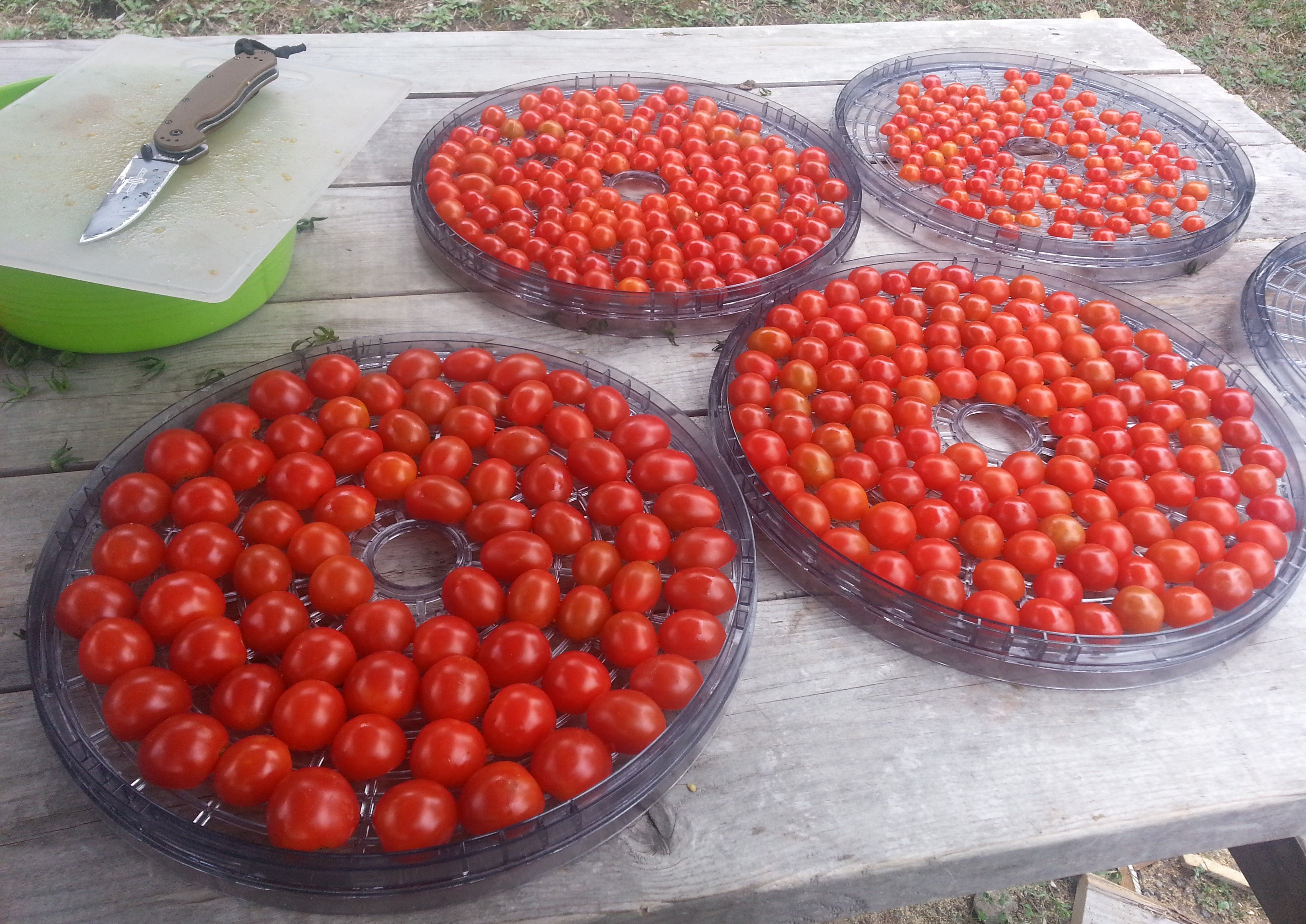
- Cherry tomatoes sliced in half and placed onto the dehydrator racks
- The dehydrator flows warm air upwards and through the racks
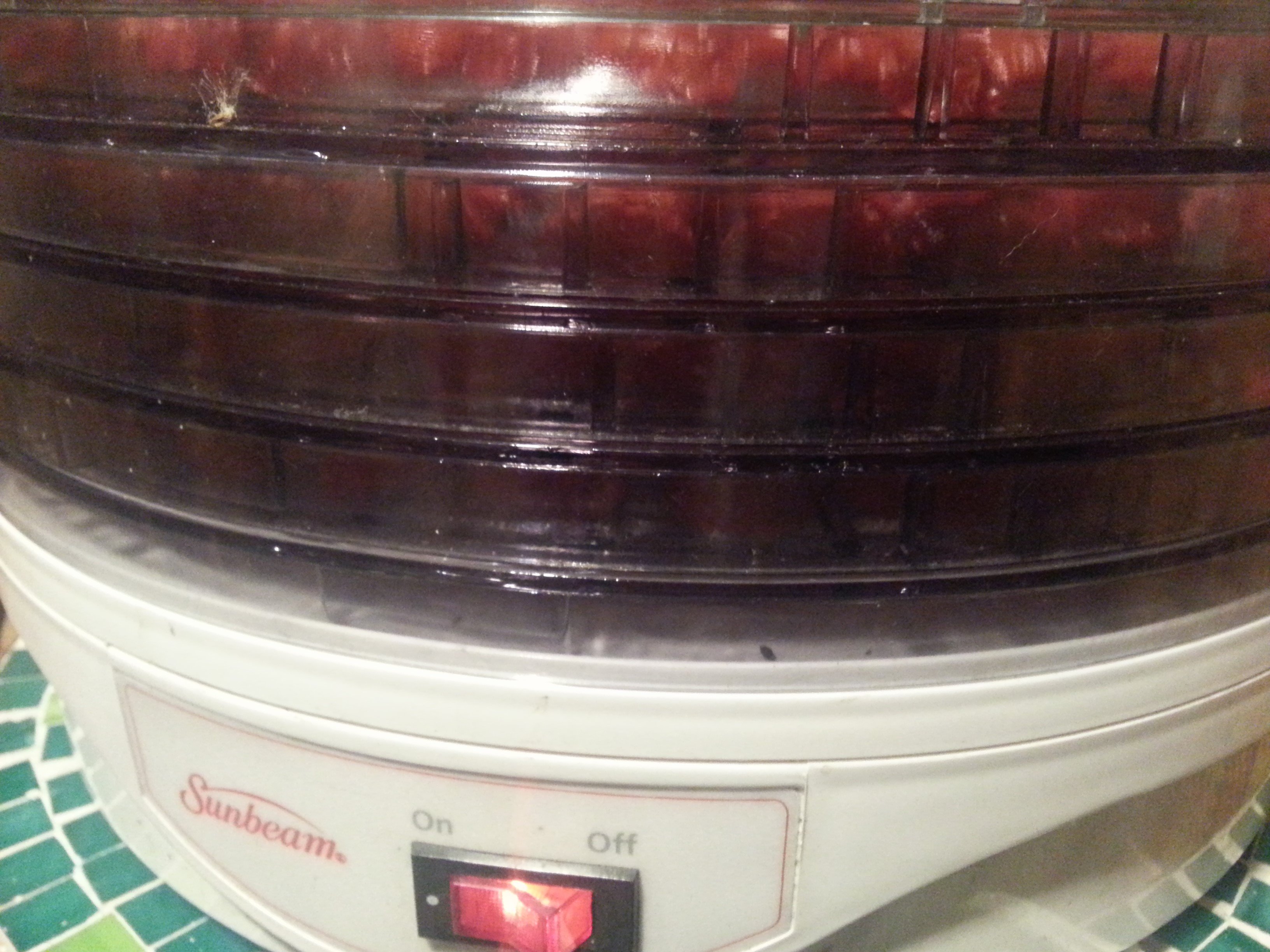
|
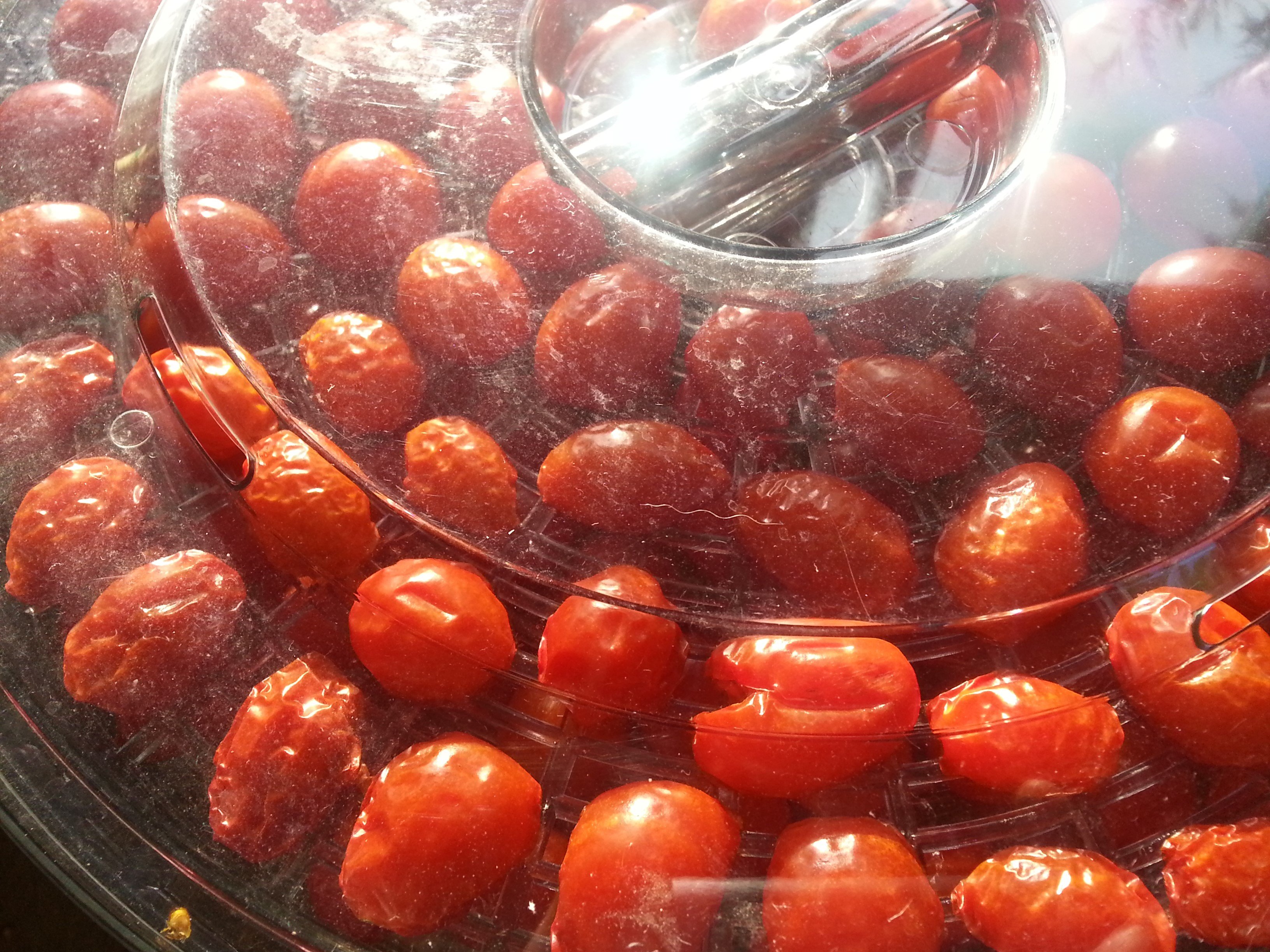
|
- The tomatoes begin to shrink and wrinkle as the warm air (135-140*F) slowly evaporates the moisture out of them
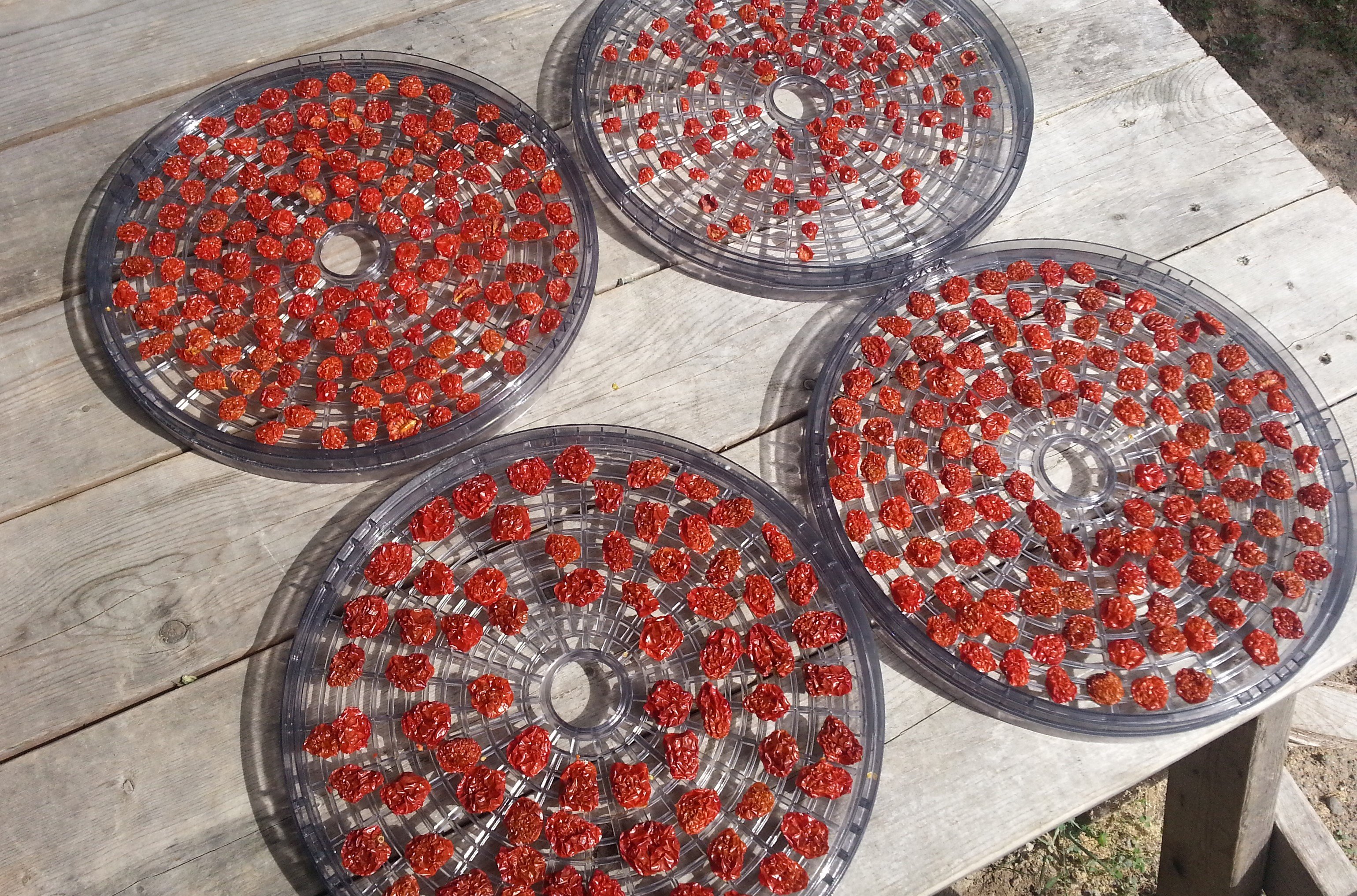
|
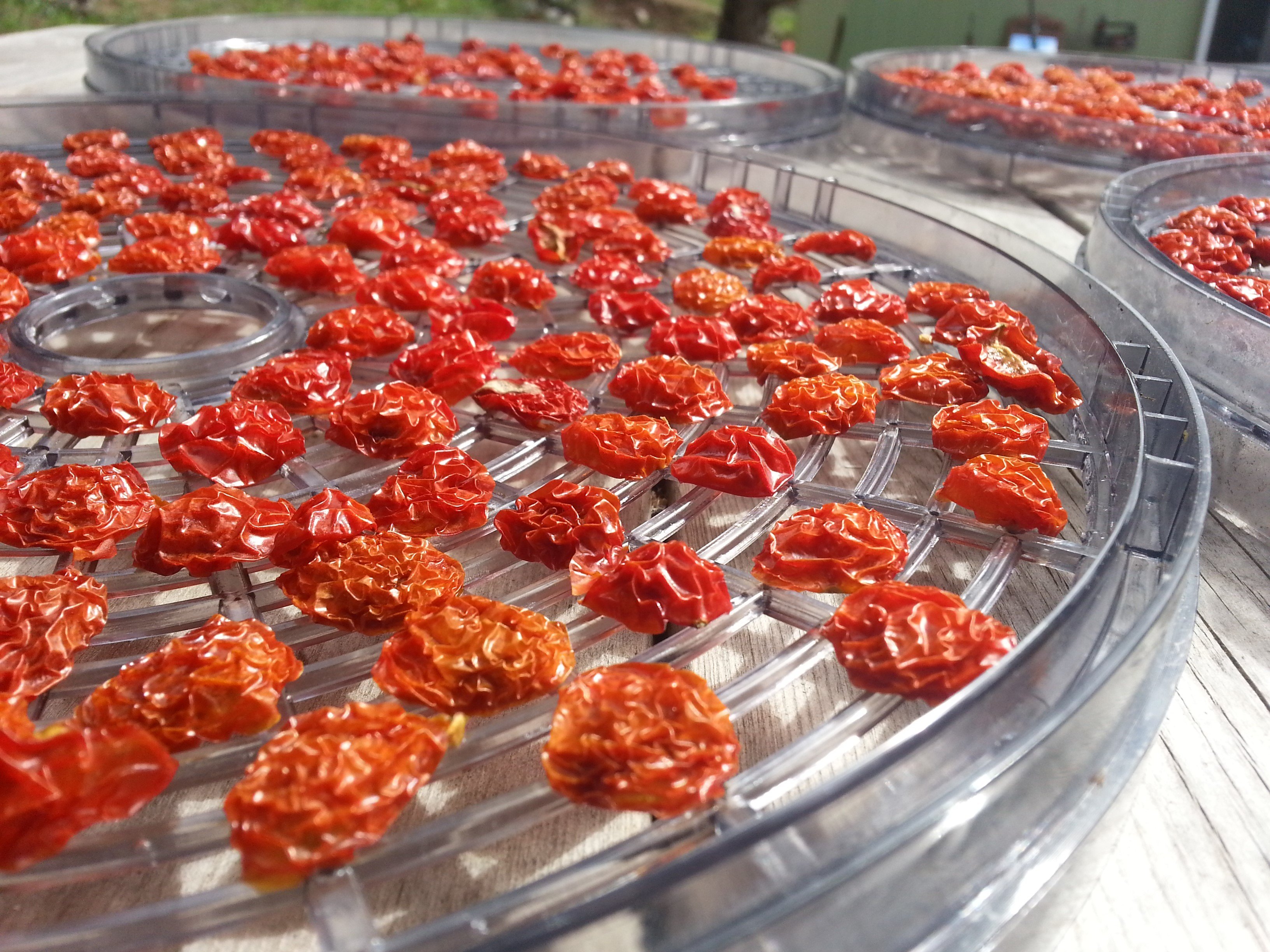
|
- The tomatoes were completely dehydrated after 15 hours in the dehydrator
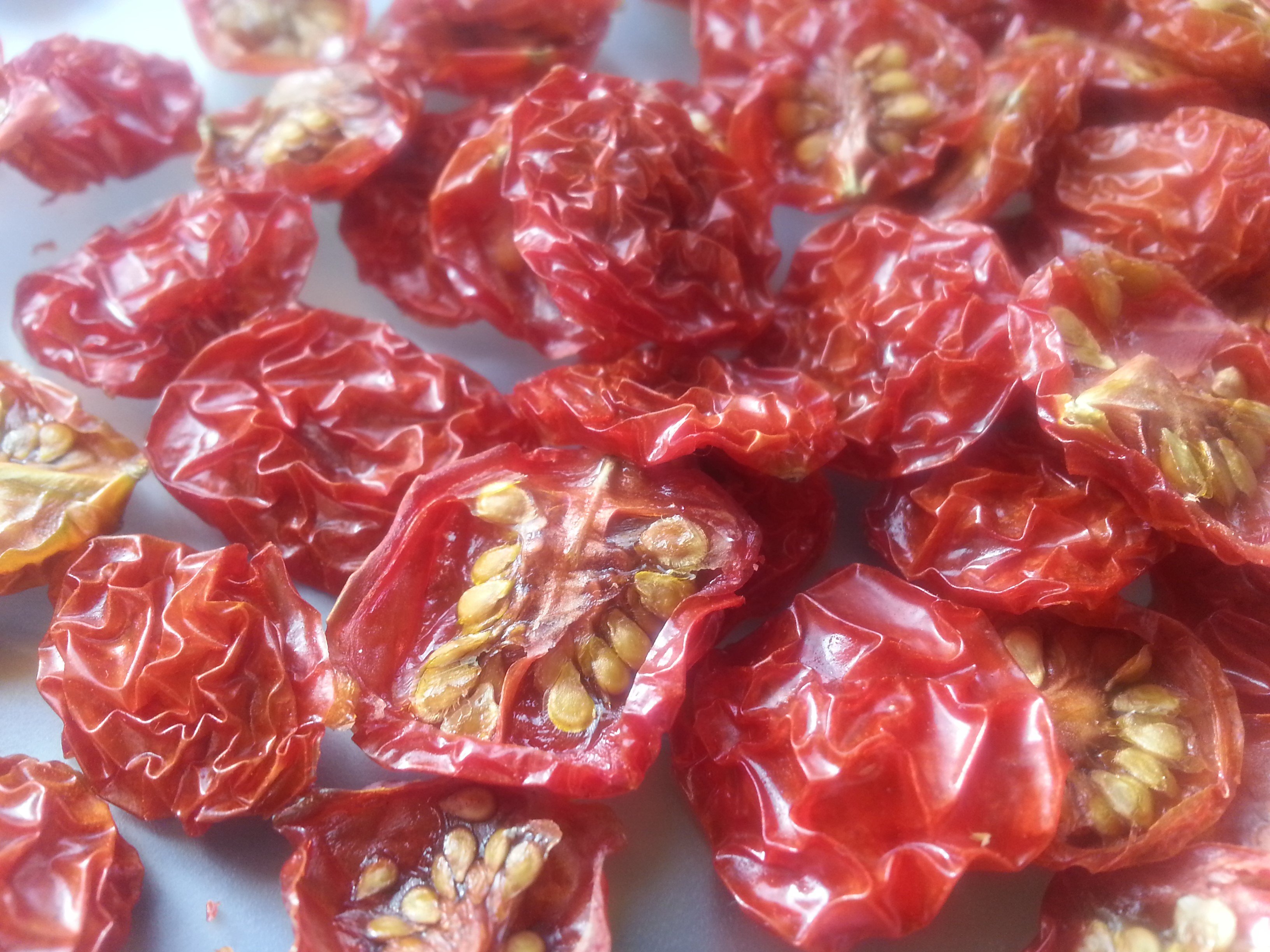
In the picture below you can see the two jars of dried tomatoes that were produced - they are ready for the dark, cool, and dry storage shelf.
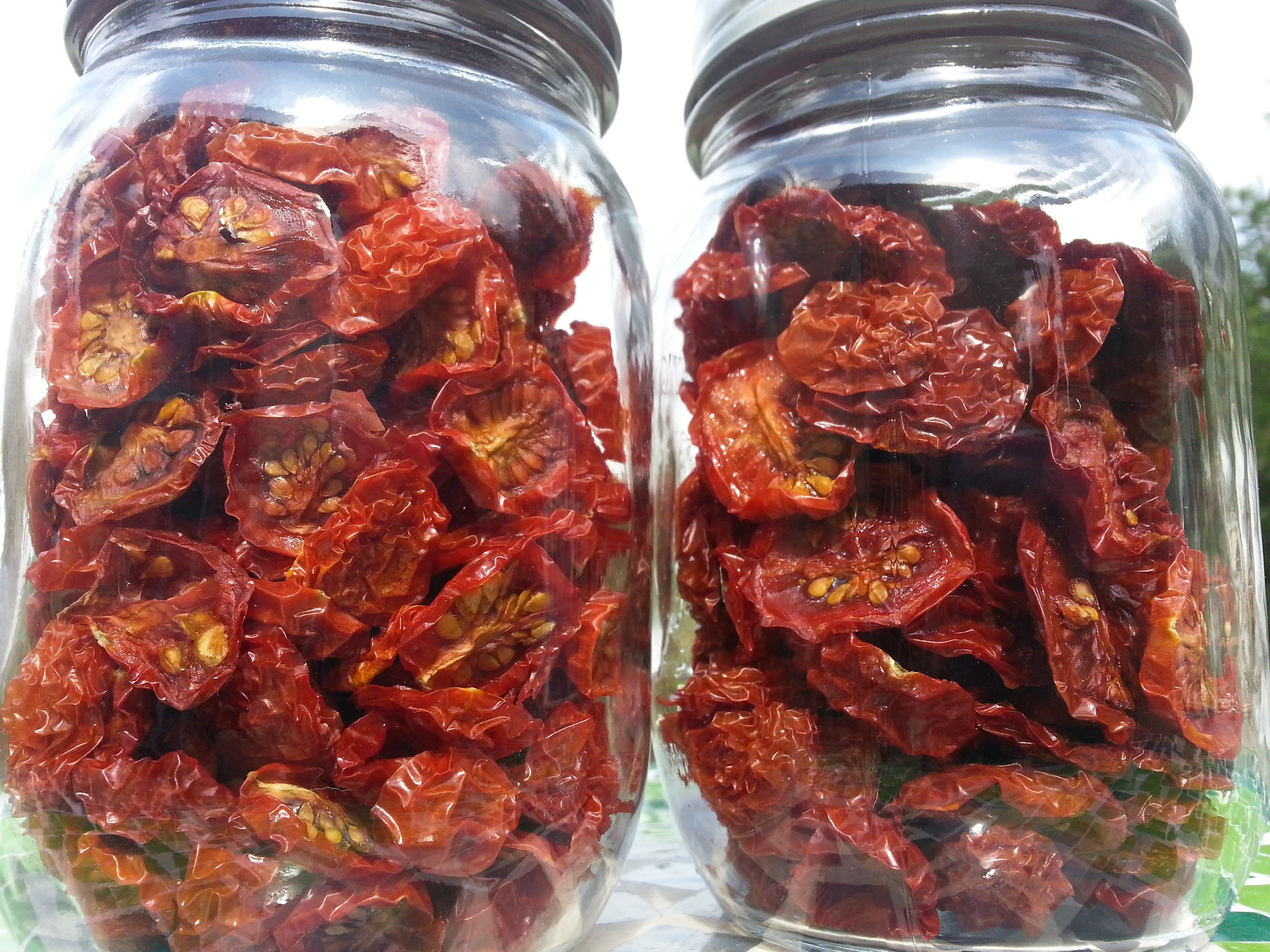
Dried Tomatoes and Basil - with Olive Oil
One of the dehydrated tomato jars will also be filled with olive oil and dried basil leaves. Basil is a perfect match for tomato - their flavors compliment each other deliciously. Their flavors will infuse with the added olive oil. The infused olive oil could be used to saute with, to make a quick salad dressing, and for many other recipes that call for olive oil. Many varieties of cooking oil could be used, olive oil is what I use for dressings, and to cook with most often.
Genovese Sweet Basil
Genovese sweet basil leaves are are larger and less delicate then regular sweet basil leaves. Well known for flavoring many Mediterranean dishes, basil blends well with tomatoes, garlic, olives, onions, cheese, and many other cooking herbs. There are many varieties of sweet basil including opal (purple), cinnamon, lemon, and anise. Pesto is a well known cooking paste made with basil, olive oil, garlic, and pine nuts. Basil is in the mint family, it originates from central Africa and south Asia.
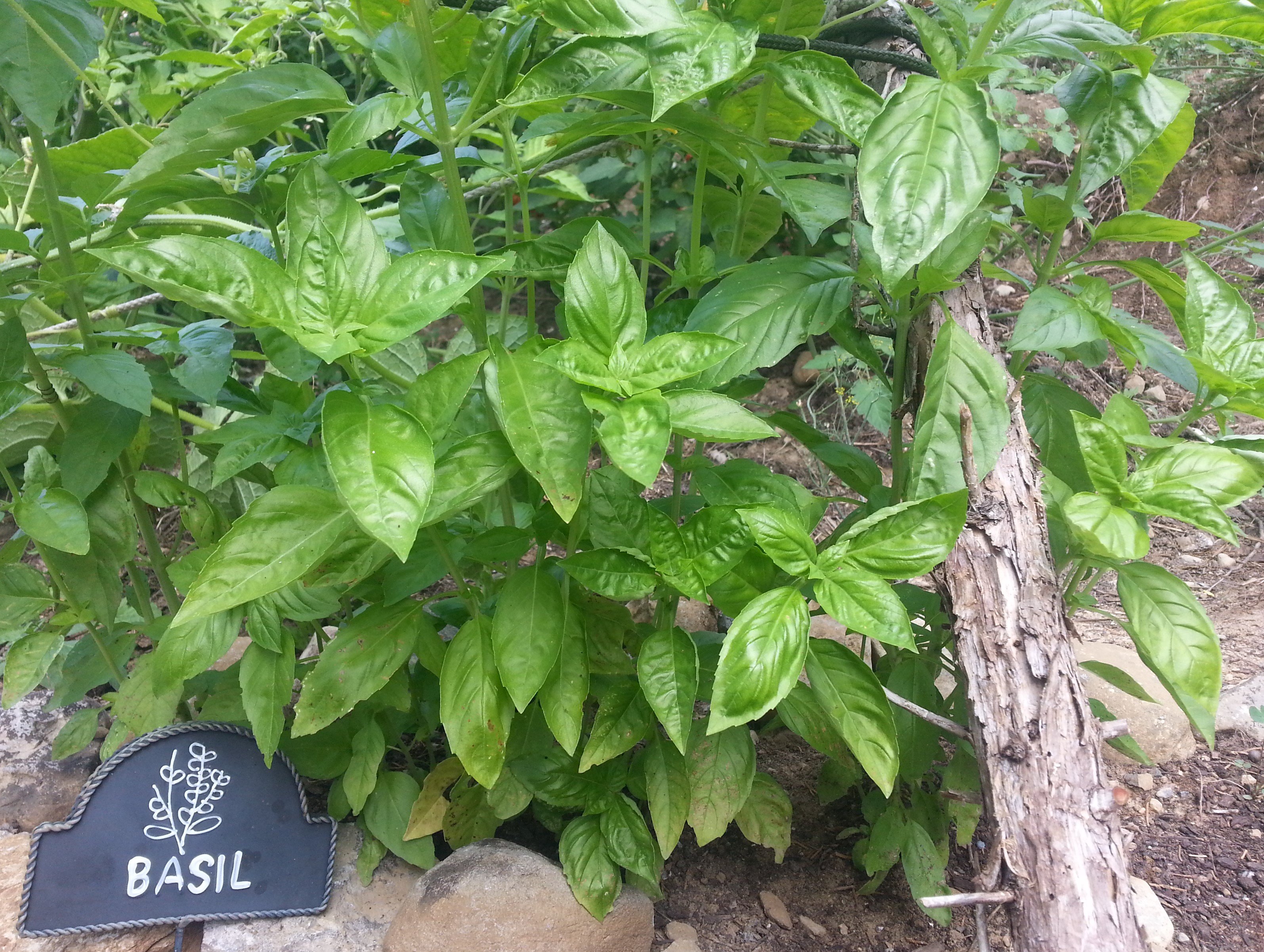
Basil is an annual herb that needs to be planted each year if it does not re-seed itself. The leaves are used for flavoring, but the flowers are edible as well. You can see the dried basil next to the freshly harvested basil on the table below. If a recipe calls for dry basil and you only have fresh, use three times as much fresh basil.

|
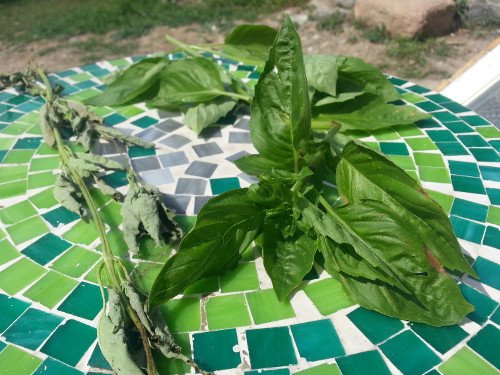
|
In the second picture below you can see the ingredients - including the dried basil. Fresh basil could be used, but I decided that if I was going to take the moisture out of the tomatoes, then I may as well take the moisture out of the basil as well. *It is not recommended to add fresh garlic to this non refrigerated jar - it could spoil the jar contents.
- Dried tomatoes and dried basil is alternately added to the mason jar until the jar is filled to 2 Inches below the top of the jar

|
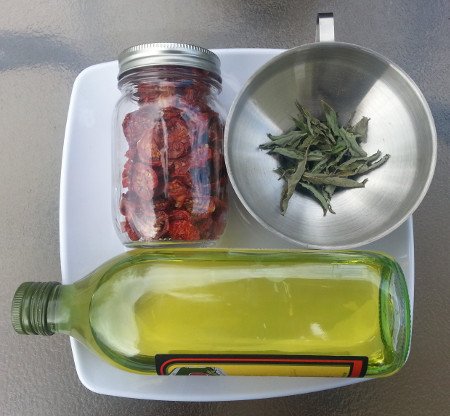
|
- Olive oil or other cooking oil is slowly added to the jar
- Gently shake the jar to help air bubbles rise to the top

|

|
- Jar lid is placed onto the jar, threaded band tightened
The jar is ready to be stored on a dark, cool, dry shelf - along with the other jar of dehydrated tomatoes. The oil will be decently infused and ready to use after a month - more flavor will infuse as more time passes.
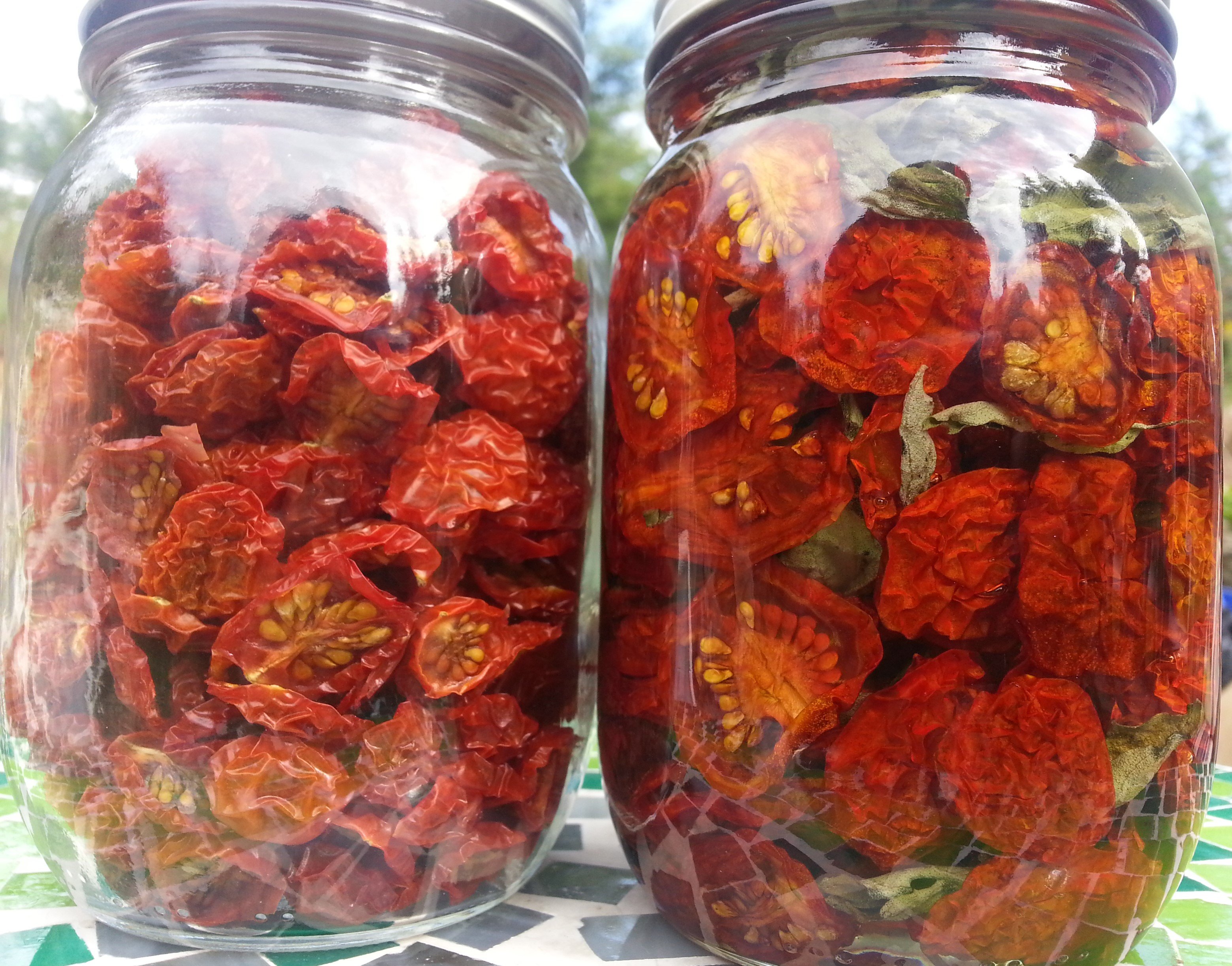
More preserves to come: Tomato Sauces, Hot Pepper, and additional Pickle preserve posts are still on the way for this harvest season.
Have a great day!
